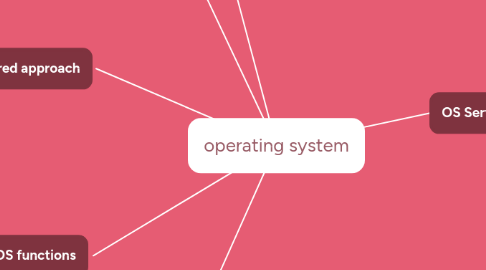
1. Additional OS functions
1.1. resource allocation
1.2. accouning
1.3. protection and security
2. system calls
2.1. provide interface between a runninng program and the OS
2.1.1. available as assemble language instructions
2.1.2. language defined to replace assembly language for system programming allows system callls to be made directly
2.2. 3 methods to pass the paraameter
2.2.1. registers
2.2.2. stored in block, table or memory and address of block passed as a parameter in register
2.2.3. places or pushes onto the stack by the program and popped of the stack by OS
2.3. types
2.3.1. process control
2.3.2. file management
2.3.3. device management
2.3.4. information maintenance
2.3.5. communication
2.3.5.1. message passing
2.3.5.2. shared memory
2.3.6. protection
3. Layered approach
3.1. OS divides into number of layers
3.1.1. bottom layer- hardware
3.1.2. highest layer- user interface
3.2. Advantage
3.2.1. simplicity of construction and debugging
3.3. Disadvantage
3.3.1. the careful definition and interaction of the layers
3.3.2. less efficient
4. Microkernal
4.1. small OS core
4.2. contains only essential core OS function
4.3. external subsystems
4.3.1. device drivers
4.3.2. file system
4.3.3. virtual memory manager
4.3.4. windowing system
4.3.5. security services
4.3.6. device drivers
4.4. benefits
4.4.1. extensibility
4.4.2. flexibility
4.4.3. reliablility
4.4.4. portability
5. OS design goals
5.1. user goals
5.1.1. convenient to use, easy to learn, reliable, safe and fast
5.2. system goals
5.2.1. easy to design, implement, maintain, flexibl, reliable, error-free and efficient

